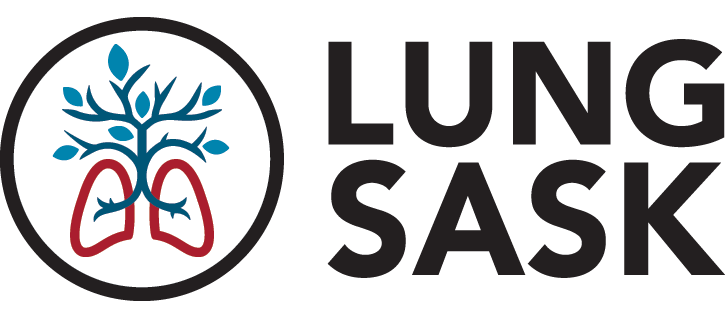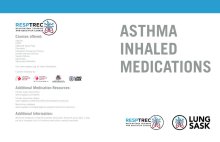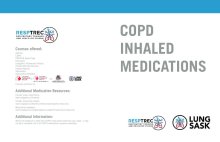Medication Resources
For information on generic and brand name drugs available in Canada, including:
- How do particular drugs work in my body?
- Are there any unwanted or side effects?
- What precautions should I take?
- How do I take the medication?
- Prescription Drug Coverage in Canada. Your guide to reimbursement for prescription medications in Canada.
- Each inhaled medication uses a different device. Using your device properly helps you get the right dose of medication. Watch these videos to ensure you are using yours correctly.
- Prescription drugs are approved by various governmental agencies federally and provincially. Access to Prescription Drugs in Canada provides an overview of how prescription drugs are approved and made available in Canada.
A•AA-Ipravent inhalation solution •AA-Theo LA tablets •Abevmy® injection •Abrysvo™ •Acarizax™ •ACH-montelukast tablets •Act-Ciprofloxacin tablets •Act-Clarithromycin XL tablets •Act-Fluconazole tablets •Act-Levofloxacin tablets •Adempas® tablets •Advair® Diskus® •Advair® MDI •Aermony Respiclick™ •Afluria® Tetra vaccine •Airomir® MDI •Alecensaro® •Alimta® •Alunbrig® tablets •Alvesco® MDI •Anoro® Ellipta® •Apo-Ambrisentan tablets •Apo-Amoxi capsules •Apo-Amoxi Clav tablets •Apo-Amoxi suspension •Apo-Azelastine/Fluticasone Nasal Spray •Apo-Azithromycin tablets •Apo-Beclomethasone nasal spray •Apo-Cefadroxil capsules •Apo-Cefuroxime tablets •Apo-Cephalex tablets •Apo-Clarithromycin tablets •Apo-Clarithromycin XL tablets •Apo-dexamethasone tablets •Apo-Doxy capsules •Apo-Doxy tablets •Apo-Erlotinib •Apo-Fluconazole tablets •Apo-fluticasone HFA •Apo-Fluticasone Nasal Spray •Apo-gefitinib tablet •Apo-Ketoconazole tablets •Apo-Levofloxacin tablets •Apo-linezolid tablet •Apo-Mometasone Nasal Spray •Apo-Montelukast tablets •Apo-moxifloxacin tablet •Apo-Prednisone tablets •Apo-Salvent MDI •Apo-Triamcinolone AQ Nasal Spray •Apo-Varenicline tablet •Arexvy vaccine •Arnuity® Ellipta® •Asmanex®Twisthaler® •Atectura® Breezhaler® •Atrovent® HFA •Auro-Amoxicillin capsules •Auro-Amoxicillin suspension •Auro-Amoxiclav tablets •Auro-Azithromycin Suspension •Auro-cefixime tablets •Auro-cefprozil tablet •Auro-Cefuroxime tablets •Auro-Cephalexin suspension •Auro-cephalexin tablet •Auro-Ciprofloxacin tablets •Auro-Clindamycin capsules •Auro-Montelukast tablets •Auro-moxifloxacin •Auro-pirfenidone •Avamys® nasal spray •Avastin® •Aybintio® B•Bambevi® •BCG vaccine •Biaxin BID® tablets •Biaxin® suspension •Bio-Ciprofloxacin tablets •Breo® Ellipta® •Breztri™ Aerosphere® •Bricanyl® Turbuhaler® C•Caripul® •Cayston® •Cefazolin Injection •Cefotaxime injection •Ceftin® suspension •Choledyl® expectorant •Cinqair™ •Cipro® suspension •Cisplatin injection •Clavulin® suspension •Colistimethate •Coly-mycin M •Combivent® Respimat® •Comirnaty® (2024-2025 formula) •Cravv® D•Dalacin C® capsules •Dalacin C® suspension •Daxas® •Diflucan® suspension •Doxycin tablets •Doxytab tablets •Duaklir® Genuair® •Dymista® E•Elixir de Theophylline •Enerzair® Breezhaler® •Etibi® tablets F•Fasenra® •Flolan® •Flonase® nasal spray •Flovent® Diskus® •Flovent® HFA •Fluad® influenza vaccine •Flucelvax® Quadrivalent Influenza vaccine •Fluconazole tablets •Flulaval® Tetra Influenza Vaccine •FluMist® Quadrivalent intranasal vaccine •Fluzone® High-Dose Quadrivalent influenza vaccine •Fluzone® Quadrivalent influenza vaccine G•Giotrif® •Glassia® •Grastek® sublingual tablets H•Habitrol® patches I•Imfinzi® •Incruse® Ellipta® •Influvac® Tetra vaccine •Inspiolto® Respimat® •Ipratropium/Salbutamol inhalation solution •Ipravent nasal spray •Iressa® tablets •Itulatek® sublingual tablets J•Jamp Ambrisentan tablets •Jamp Amoxi Clav tablet •Jamp Doxycycline capsule •Jamp Gefitinib tablet •Jamp Levofloxacin tablets •Jamp linezolid tablets •Jamp Oseltamivir capsule •Jamp-Amoxicillin capsule •Jamp-Azithromycin tablets •Jamp-Ciprofloxacin tablets •Jamp-Clindamycin capsules •Jamp-Cloxacillin capsules •Jamp-itraconazole oral solution •Jamp-Montelukast tablets •Jamp-Moxifloxacin •Jamp-Nystatin Suspension •Jamp-Pirfenidone capsules K•Kalydeco® granules •Kalydeco® tablet •Keytruda® L•Lorbrena™ tablets •Lupin-cephalexin suspension •Lupin-Tiotropium M•M-Amoxi Clav suspension •M-Clarithromycin tablets •M-Clindamycin capsules •M-Moxifloxacin tablet •MAR-Ciprofloxacin tablets •MAR-montelukast tablets •Minocycline capsules •Mint-Ciprofloxacin tablets •Mint-Itraconazole capsule •Mint-Montelukast tablets •Montelukast chewable tablets •Montelukast tablets •Mvasi® •Mycobutin tablets •Mylan-Azelastine/Fluticasone nasal spray •Mylan-Beclo Aqueous nasal spray •Mylan-Budesonide aqueous nasal spray •Mylan-Fluconazole tablets N•Nasacort® AQ nasal spray •Nasonex® Nasal Spray •Nat-Bosentan •Nat-Erlotinib tablet •NAT-Gefitinib tablet •Nat-Oseltamivir Capsule •Nat-Oseltamivir suspension •Nic-Hit Gum •Nic-Hit mini lozenge •Nic-Hit Spray •Nicoderm® patches •Nicorette® gum •Nicorette® inhaler •Nicorette® Mini Lozenges •Nicorette® Quick Mist •Nicotine Gum •Nicotine Patch •Nucala™ •Nuvaxovid® vaccine 2024-2025 formula O•Odan Dexamethasone elixir •Odan Itraconazole oral solution •Ofev® •Omega - amikacin sulfate injection •Omnaris® nasal spray •Opdivo® •Opsumit® tablets •Opsynvi® •Oralair® •Orkambi® •Oxeze® Turbuhaler® P•Paclitaxel Injection •Paxlovid™ •PDP-Isoniazid oral solution •PDP-Isoniazid tablets •PDP-Pyrazinamide tablets •Pen-VK tablets •PMS-Azithromycin tablets •PMS-bosentan tablet •PMS-Ciprofloxacin tablets •PMS-Dexamethasone tablets and elixir •PMS-Erlotinib tablet •PMS-Fluconazole tablets •PMS-Fluticasone HFA •PMS-Fluticasone Propionate/ Salmeterol DPI •PMS-Ipratropium inhalation solution •PMS-Ipratropium nasal spray •PMS-Montelukast chewable tablets •PMS-Montelukast tablets •PMS-Nystatin suspension •PMS-pirfenidone •PMS-Salbutamol Polynebs® •Pneumovax 23® vaccine •Prevnar 20™ •PRO-Amox capsules •PRO-Ciprofloxacin tablets •PRO-Clarithromycin tablets •Prolastin-C® •PRZ-doxycycline tablet •Pulmicort® nebuamp •Pulmicort® Turbuhaler® •Pulmozyme® Q•Quinsair™ •QVAR® MDI R•Ragwitek® tablets •Relenza® •Retevmo™ •Rhinocort® aqua nasal spray •Riva-Ciprofloxacin tablets •Rofact® capsules •Rozlytrek® capsules •Ryaltris® nasal spray S•Sandoz Ambrisentan tablets •Sandoz Amikacin injection •Sandoz Amoxi-clav tablets •Sandoz Azithromycin tablets •Sandoz Azithromycin Suspension •Sandoz Ciprofloxacin tablets •Sandoz Clarithromycin tablets •Sandoz gefitinib tablet •Sandoz Levofloxacin tablets •Sandoz Linezolid tablets •Sandoz Mometasone Nasal Spray •Sandoz Montelukast chewable tablets •Sandoz Montelukast oral granules •Sandoz Montelukast tablets •Sandoz Moxifloxacin tablets •Sandoz Pirfenidone capsules •Sandoz Riociguat •Sanis Amoxicillin/Clav tablet •Sanis Doxycyline capsule •Sanis-Amoxicillin capsules •Sanis-Amoxicillin sugar reduced suspension •Sanis-Amoxicillin Suspension •Sanis-Azithromycin tablets •Sanis-Cephalexin tablets •Sanis-Ciprofloxacin tablet •Sanis-Clarithromycin tablets •Sanis-Clindamycin capsules •Sanis-Doxycycline capsules •Sanis-Doxycycline tablets •Sanis-Mometasone Nasal Spray •Sanis-Montelukast tablets •Sanis-Moxifloxacin tablets •Sanis-Salbutamol Inhaler HFA •Seebri® Breezhaler® •Serevent® Diskus® •Singulair® chewable tablets •Singulair® oral granules •Singulair® oral tablets •Siv-amoxicillin capsules •Siv-amoxicillin suspension •Sivem-Ciprofloxacin tablets •Sivem-Clarithromycin tablets •Sivem-Montelukast tablets •Spikevax® 2024-2025 vaccine •Spiriva® Handihaler® •Spiriva® Respimat® •Sporanox® capsules •Sulfatrim and Sulfatrim DS tablets •Sulfatrim Pediatric tablets •Supemtek™ •Suprax® suspension •Suprax® tablets •Symbicort® Turbuhaler® •Symdeko™ tablet •Synagis® T•Tagrisso® •Tamiflu® capsules •Tamiflu® suspension •Tarceva® tablets •Taro-Bosentan •Taro-Budesonide inhalation solution •Taro-Cefprozil suspension •Taro-Cefprozil tablets •Taro-ciprofloxacin tablet •Taro-clarithromycin suspension •Taro-Clarithromycin tablets •Taro-Montelukast tablets •Taro-Pemetrexed injection •Tecentriq® •Teva-amoxicillin capsules •Teva-amoxicillin chewable tablets •Teva-amoxicillin sugar-reduced suspension •Teva-amoxicillin suspension •Teva-Ampicillin capsules •Teva-Azithromycin tablets •Teva-Budesonide inhalation solution •Teva-carboplatin Inj •Teva-Cefadroxil capsules •Teva-Cephalexin capsules •Teva-Cephalexin suspension •Teva-Cephalexin tablets •Teva-Clindamycin capsules •Teva-Cloxacillin capsules •Teva-Cloxacillin solution •Teva-Combo Sterinebs •Teva-Doxycycline capsules •Teva-Doxycycline tablets •Teva-Erlotinib tablets •Teva-Etoposide injection •Teva-Fluconazole tablets •Teva-Fluticasone Nasal Spray •Teva-Ipratropium Sterineb •Teva-Ketoconazole tablets •Teva-Mometasone Nasal Spray •Teva-Montelukast chewable tablets •Teva-Montelukast tablets •Teva-moxifloxacin tablet •Teva-Nystatin suspension •Teva-Prednisone tablets •Teva-Salbutamol HFA •Teva-Salbutamol Sterineb •Teva-Tobramycin inhalation solution •Teva-varenicline tablet •Tezspire™ •Theo ER •Thrive® gum •Thrive® lozenges •Tobi® inhalation solution •Tobi® Podhaler® •Topotecan Injection •Tracleer® •Trelegy® Ellipta® •Trikafta® granules •Trikafta® tablet •Tudorza® Genuair® U•Ultibro® Breezhaler® •Uptravi® tablets V•Vaxneuvance® •Vegzelma™ •Veklury® injection •Ventolin® Diskus® •Ventolin® HFA •Ventolin® inhalation solution •Vepesid® capsules •Vinorelbine Injection •Volibris® tablets W•Winpred tablets •Wixela® Inhub® X•Xalkori® capsules •Xolair® Y•Yervoy® injection Z•Zaditen® tablets •Zenhale® •Zirabev® •Zithromax® suspension •Zithromax® tablets •Zyban® •Zykadia® •Zyvoxam®
a•allergic rhinitis •allergies •asthma b•bronchitis •bronchospasm associated with COPD c•candidiasis •chronic bronchitis (COPD) •congenital alpha1-antitrypsin deficiency •COPD •COVID-19 •cystic fibrosis d•depression e•emphysema (COPD) •exercise-induced bronchospasm f•flu h•hay fever i•influenza m•middle ear infections n•nasal polyps •nicotine addiction •nicotine withdrawal symptoms •non-small cell lung cancer p•perennial rhinitis •pharyngitis •pneumonia •primary pulmonary hypertension •pulmonary fibrosis •Respiratory Syncytial Virus (RSV) r•respiratory tract infections •rhinitis •runny nose s•seasonal allergies •seasonal rhinitis •secondary pulmonary hypertension •sinus infections •sinusitis •sleep apnea •small cell lung cancer •sore throat t•thrush •tonsilitis •tuberculosis u•upper respiratory tract infections y•year-round allergies •yeast infection of the mouth and throat
A•aclidinium bromide •afatinib •alectinib •alpha 1-antitrypsin •ambrisentan •amikacin •amoxicillin •ampicillin •atezolizumab •attenuated tubercle bacillus •azelastine •azithromycin •aztreonam B•beclomethasone dipropionate •benralizumab •bevacizumab •bosentan •brigatinib •budesonide •bupropion hydrochloride C•carboplatin •cefadroxil •cefazolin •cefixime •cefotaxime •cefprozil •cefuroxime axetil •cephalexin •ceritinib •ciclesonide •ciprofloxacin •cisplatin •clarithromycin •clavulanic acid •clindamycin •cloxacillin •colistin •COVID-19 mRNA vaccine, Omicron KP.2 variant •COVID-19 Vaccine (Recombinant protein, Adjuvanted) •crizotinib •cytisine D•dexamethasone •dornase alfa •doxycycline •durvalumab E•elexacaftor •entrectinib •epoprostenol sodium •erlotinib •ethambutol •etoposide F•fluconazole •fluticasone furoate •fluticasone propionate •formoterol fumarate G•gefitinib •glycopyrronium bromide •grass pollen allergen extract •guaifenesin H•house dust mite allergen extract I•indacaterol maleate •influenza vaccine - inactivated; mammalian cell culture-based •influenza vaccine - inactivated; recombinant •influenza vaccine, inactivated •influenza vaccine-live, attenuated •ipilimumab •ipratropium bromide •isoniazid •itraconazole •ivacaftor K•ketoconazole •ketotifen L•levofloxacin •linezolid •lorlatinib •lumacaftor M•macitentan •mepolizumab •minocycline •mometasone furoate •montelukast sodium •moxifloxacin N•nicotine •nintedanib •nirmatrelvir •nivolumab •nystatin O•olodaterol hydrochloride •olopatadine •omalizumab •oseltamivir •osimertinib •oxtriphylline P•paclitaxel •palivizumab •pembrolizumab •pemetrexed •penicillin V •pirfenidone •pneumococcal conjugate vaccine (Pneu-C-15) •Pneumococcal conjugate vaccine (Pneu-C-20) •pneumococcal polysaccharide vaccine (Pneu-P-23) •prednisone •pyrazinamide R•remdesivir •reslizumab •respiratory syncytial virus (RSV) Vaccine - recombinant •respiratory syncytial virus (RSV) Vaccine - recombinant with adjuvant •rifabutin •rifampin •riociguat •ritonavir •roflumilast S•salbutamol sulphate •salmeterol xinafoate •selexipag •selpercatinib •short ragweed (Ambrosia artemisiifolia) allergen extract •sulfamethoxazole T•tadalafil •terbutaline sulfate •tezacaftor •tezepelumab •theophylline •timothy grass pollen allergen extract •tiotropium bromide monohydrate •tobramycin sulfate •topotecan •triamcinolone acetonide •trimethoprim U•umeclidinium bromide V•varenicline •vilanterol trifenatate •vinorelbine W•white birch allergen extract Z•zanamivir
A•AA Pharma •Accord Healthcare Inc. •Actavis Pharma Company •Actelion Pharmaceuticals Canada Ltd. •ALK-AbelloÌ A/S •Amgen Canada Inc. •Apotex Inc. •AstraZeneca Canada Inc. •Auro Pharma Inc •Aventis Pasteur Ltd B•Bausch Health Canada •Bayer Inc. •BGP Pharma ULC •Biovail Pharmaceuticals Canada •Boehringer Ingelheim •Bristol-Myers Squibb Canada Inc. C•Celltrion Healthcare Canada Ltd E•Eli Lilly •ERFA Canada G•Gilead Sciences •GlaxoSmithKline •Glenmark Pharmaceuticals Canada Inc. •Grifols Canada Ltd. H•Hoffman-LaRoche •Hospira I•ID Biomedical Corporation J•Jamp Pharma Corporation •Janssen Inc. •Juno Pharmaceuticals Canada L•Laboratoire Atlas Inc. •Laboratoire Riva Inc. •Loxo Oncology Inc. •Lupin Pharma Canada Ltd M•Mantra Pharma Inc •McNeil Consumer Healthcare •Merck Canada •Mint Pharmaceuticals Inc. •Moderna Biopharma Canada •MPI •Mylan N•Natco Pharma Inc. •Novartis •Novavax, Inc O•Odan Laboratories Ltd. P•Pendopharm •Pfizer Canada Inc. •Pharmaris Canada Inc •Pharmascience Inc. •Pro Doc Limitee R•Raptor Pharmaceuticals Corp. •Riva Laboratories Ltd. •Roche S•Samsung Bioepis •Sandoz Canada Inc. •Sanis Health Inc. •Sanofi Pasteur •Sanofi-Aventis Canada Inc. •Seqirus •Sivem Pharmaceuticals •Stallergenes Greer •Sun Pharma T•Takeda Canada •Taro Pharmaceuticals Inc. •Teva Pharmaceutical Industries V•Valeant Canada Limited •Vertex Pharmaceuticals Z•zpharm, Inc



